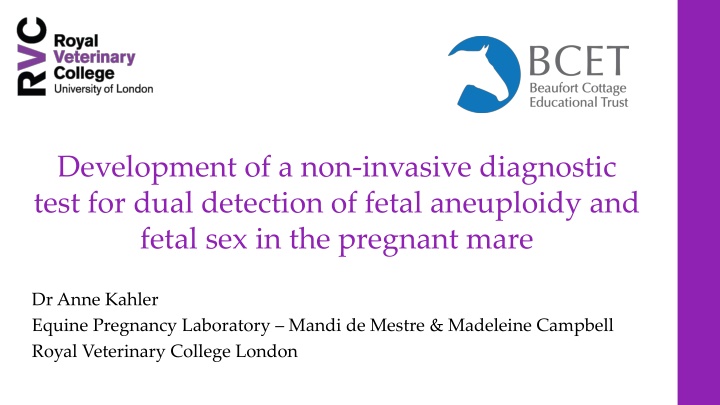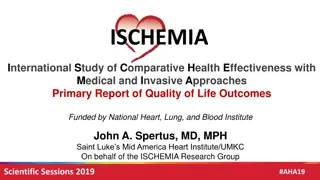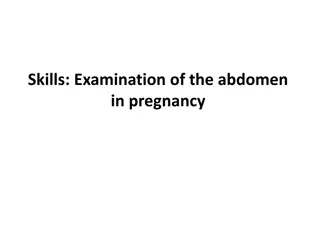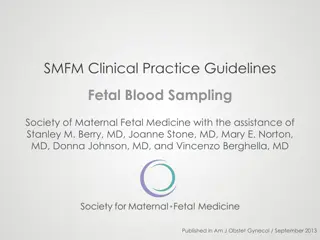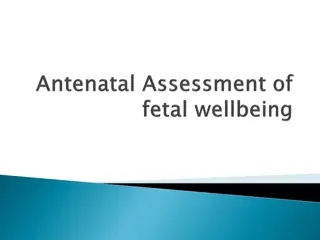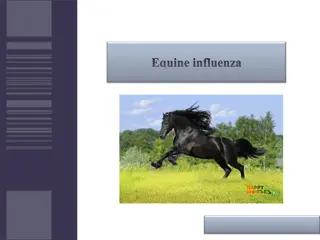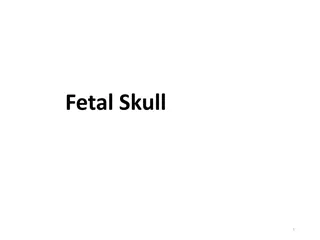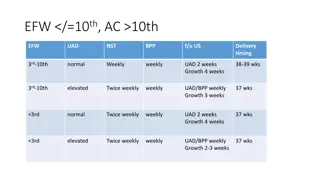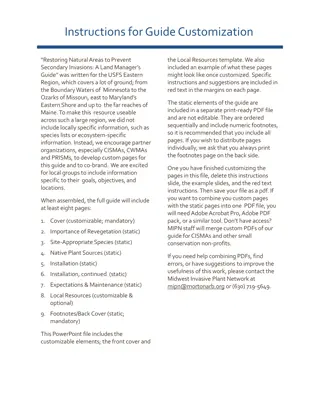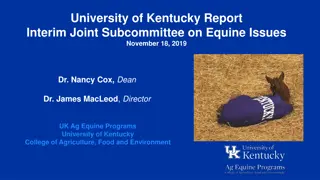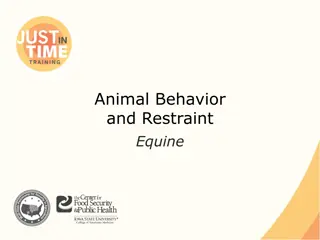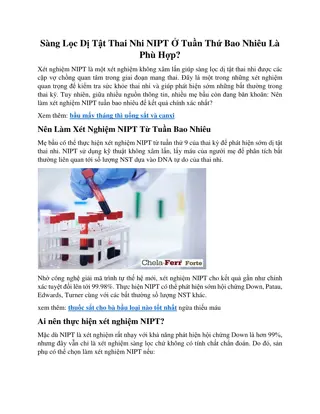Non-Invasive Equine NIPT for Fetal Aneuploidy & Sex Detection
Development of a non-invasive diagnostic test for dual detection of fetal aneuploidy and fetal sex in pregnant mares could revolutionize equine stud medicine. Equine NIPT aims to diagnose aneuploid pregnancies, identify lethal genetic variants, determine fetal sex, and shed light on unexplained pregnancy losses. With the potential to enhance pregnancy monitoring, counseling, and informed management, this innovative approach addresses key challenges in equine reproductive health.
Download Presentation

Please find below an Image/Link to download the presentation.
The content on the website is provided AS IS for your information and personal use only. It may not be sold, licensed, or shared on other websites without obtaining consent from the author.If you encounter any issues during the download, it is possible that the publisher has removed the file from their server.
You are allowed to download the files provided on this website for personal or commercial use, subject to the condition that they are used lawfully. All files are the property of their respective owners.
The content on the website is provided AS IS for your information and personal use only. It may not be sold, licensed, or shared on other websites without obtaining consent from the author.
E N D
Presentation Transcript
Development of a non-invasive diagnostic test for dual detection of fetal aneuploidy and fetal sex in the pregnant mare Dr Anne Kahler Equine Pregnancy Laboratory Mandi de Mestre & Madeleine Campbell Royal Veterinary College London
NIPT in women a screening test for fetal genetic abnormalities based on isolation of cell-free fetal DNA (cffDNA) from maternal blood = non-invasive cfDNA small pieces of DNA, with a very short lifespan released during cell death and via secretion of microparticles from all tissues of the body applied as a diagnostic biomarker in pregnancy, fetal cfDNA originates from the placenta
What are the proposed benefits of NIPT in equine stud medicine? (a) Incidence of pregnancy loss. approx. 80% of pregnancies result in a live foal d65 to birth 5.5% d15-42 6.4% d43-65 1.6% d0-14 (b) Diagnosis of pregnancy loss. aneuploidy presents in approx. 22% of failed equine pregnancies specific lethal genetic variants are known, e.g., mutation of the PLOD1 and deletion of the TUBB gene, or expected be discovered in the future approx. 60% of pregnancy losses in mares do not receive a diagnosis
Equine NIPT may offer a diagnostic tool to diagnose aneuploid pregnancies & lethal genetic variants to unravel unexplained pregnancy loss to allow non-invasive sex determination of the fetus Goal: to add a piece to the puzzle of pregnancy monitoring, counselling & informed management of mares suffering pregnancy loss.
1st hurdle can we find cfDNA ?? sparse knowledge and no established techniques for isolation and assessment of cfDNA in horses guidance via methodologies, applied in human medicine plasma samples pregnant mares d70 to 80 n = 6 last trimester n = 15 non-pregnant mares geldings
5.5 Results cfDNA Isolation I 5.0 4.5 4.0 cfDNA yield (ng/ml plasma) cfDNA isolations n = 80 3.5 3.0 median cfDNA yield 0.99 ng/ml plasma 2.5 2.0 1.5 * cfDNA yield is not different (P > 0.05) between 1.0 0.5 individual mares 0.0 0 10 20 30 40 50 60 70 80 stage of pregnancy cfDNA Isolation Fig. (a) cfDNA yield (ng/ml plasma) *Bayless et al, 2022, median cfDNA concentrations plasma volume/isolation processing of plasma within 12h vs 24h from blood collection
Results cfDNA Isolation II cfDNA yield (ng/ml) is significantly higher (P = 0.0037) for an incubation temperature of 56 C (Incubation temperature 1, n = 40) compared to 21 C (Incubation temperature 2, n = 40) during the magnetic-bead binding step of the isolation protocol 21 C 56 C
2nd hurdle is there a fetal contribution to the small amount of total cfDNA isolated from pregnant mares plasma ?? false positive and false negative NIPT results are possible and described for human pregnancies confidence of any NIPT highly depends on the fetal fraction Goal: to examine presence of fetal cfDNA via detection of a male signal by qPCR.
A cffDNA sexing qPCR must .. amplify cell- free DNA .. be very sensitive & specific .. amplify fetal DNA
qPCR ADULT CONTROL DNA I use of a novel Y chromosomal marker TSPY , present in multiple copies primers designed for a product size of 75 bp male specific amplification female non-specific amplification Representative images of melt peak & amplification curves for DNA, isolated from blood/tissue of adult horses.
qPCR ADULT CONTROL DNA II template DNA 0.2ng 0.1ng Valid, conclusive & correct 39/41 33/41 Non-valid 0/41 2/41 Inconclusive 2/41 5/41 Incorrect 0/41 1/41 Effectiveness* 95.1% 80.5% Sensitivity 100% 100% 95.2% Specificity 100% 92.8% Pos Predictive Value 100% Neg Predictive Value 100% 100% *Effectiveness (%) = valid, conclusive & correct classifications/total no. of samples (n = 41).
qPCR ADULT CONTROL DNA III male control 10% male 4% male 8% male 6% male pooled female NTC Cell-free DNA isolated during pregnancy always consists of a larger maternal and smaller fetal fraction. A fetal fraction of approx. 4% is required to achieve conclusive NIPT in women. 4% to 10% of male DNA, added to an artificial female DNA sample , is reliably detected.
qPCR FETAL DNA male control male ALC male ALC female ALC female control NTC Conclusive results present for 6/6 samples of DNA, isolated from early fetal membranes (d33 to 42 of pregnancy).
qPCR adult cfDNA (0.1 to 0.4 ng template DNA) (a) Images of TSPY melt peak & amplification curves for cfDNA, isolated from plasma of non-pregnant adult mares (n = 2). (b) Images of TSPY melt peak & amplification curves for cfDNA, isolated from plasma of adult geldings (n = 4).
qPCR fetal cfDNA (0.1 to 0.4 ng template DNA) cf male control Representative images of TSPY melt peak & amplification curves for cfDNA, isolated from plasma of pregnant mares, one carrying a male and one a female pregnancy and cfDNA isolated from plasma of a non-pregnant mare (female control) and a gelding (male control). Amplification of TSPY for cfDNA, isolated from plasma of pregnant mares: d70 - 80 Inconclusive 0/6 Conclusive 6/6 BUT 2/2 confirmed male pregnancies predicted as females = false negative. last trimester 1/15 14/15 4/4
Conclusion first detailed description of isolation & assessment of cfDNA from plasma of pregnant mares development of a sexing qPCR, that is highly sensitive, specific and amplifies adult, fetal & cfDNA although a male signal from cfDNA, isolated from plasma of mares, carrying a male pregnancy indicating the fetal fraction was not detectable fetal fraction ? plasma volume & composition ? equine placentation ?
Thank you. Rossdales Veterinary Surgeons Newmarket Equine Hospital Twemlows Stud farm St Georges University of London Equine Pregnancy Laboratory Mandi de Mestre & Madeleine Campbell
References Incidence and causes of pregnancy loss after Day 70 of gestation in Thoroughbreds. Roach JM, Foote AK, Smith KC, Verheyen KL, de Mestre AM. Equine Vet J. 2021 Sep;53(5):996-1003. doi: 10.1111/evj.13386. Descriptive study of current therapeutic practices, clinical reproductive findings and incidence of pregnancy loss in intensively managed thoroughbred mares. Rose BV, Firth M, Morris B, Roach JM, Wathes DC, Verheyen KLP, de Mestre AM. Anim Reprod Sci. 2018 Jan;188:74-84. doi: 10.1016/j.anireprosci.2017.11.011. Whole genome analysis reveals aneuploidies in early pregnancy loss in the horse. Charlotte A Shilton, Anne Kahler, Brian W Davis, James R Crabtree, James Crowhurst, Andrew J McGladdery, D Claire Wathes, Terje Raudsepp, Amanda M de Mestre. Sci Rep. 2020 Aug 7;10(1):13314. doi: 10.1038/s41598-020-69967-z Fetal morphological features and abnormalities associated with equine early pregnancy loss. Kahler A, McGonnell IM, Smart H, Kowalski AA, Smith KC, Wathes DC, de Mestre AM. Equine Vet J. 2021 May;53(3):530-541. doi: 10.1111/evj.13340. Skin malformations in a neonatal foal tested homozygous positive for Warmblood Fragile Foal Syndrome. Monthoux, C., de Brot, S., Jackson, M. et al. BMC Vet Res 11, 12 (2015). https://doi.org/10.1186/s12917-015-0318-8 First reported case of fragile foal syndrome type 1 in the Thoroughbred caused by PLOD1 c.2032G>A. Grillos AS, Roach JM, de Mestre AM, Foote AK, Kinglsey NB, Mienaltowski MJ, Bellone RR. Equine Vet J. 2022 Nov;54(6):1086-1093. doi: 10.1111/evj.13547.
